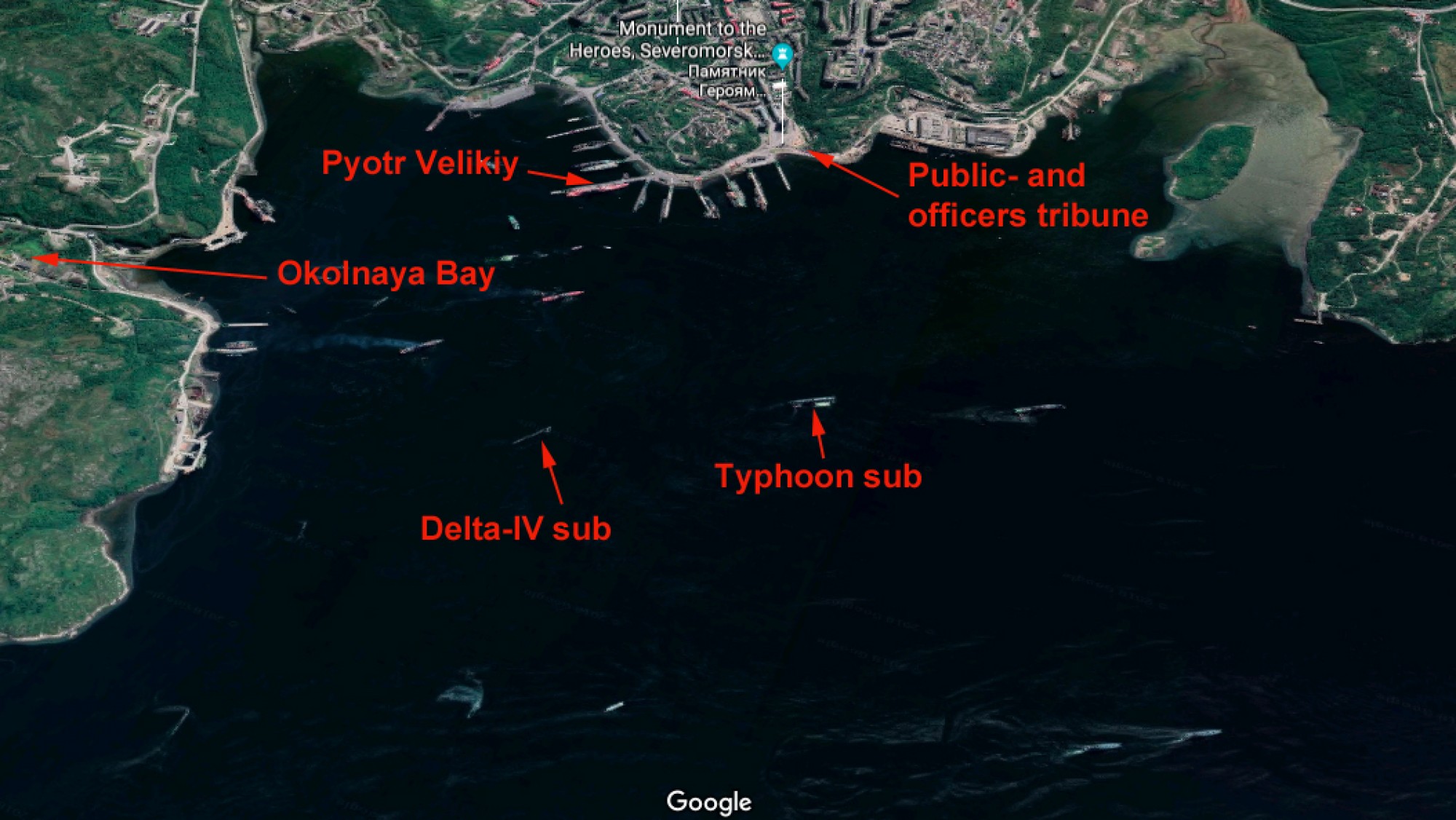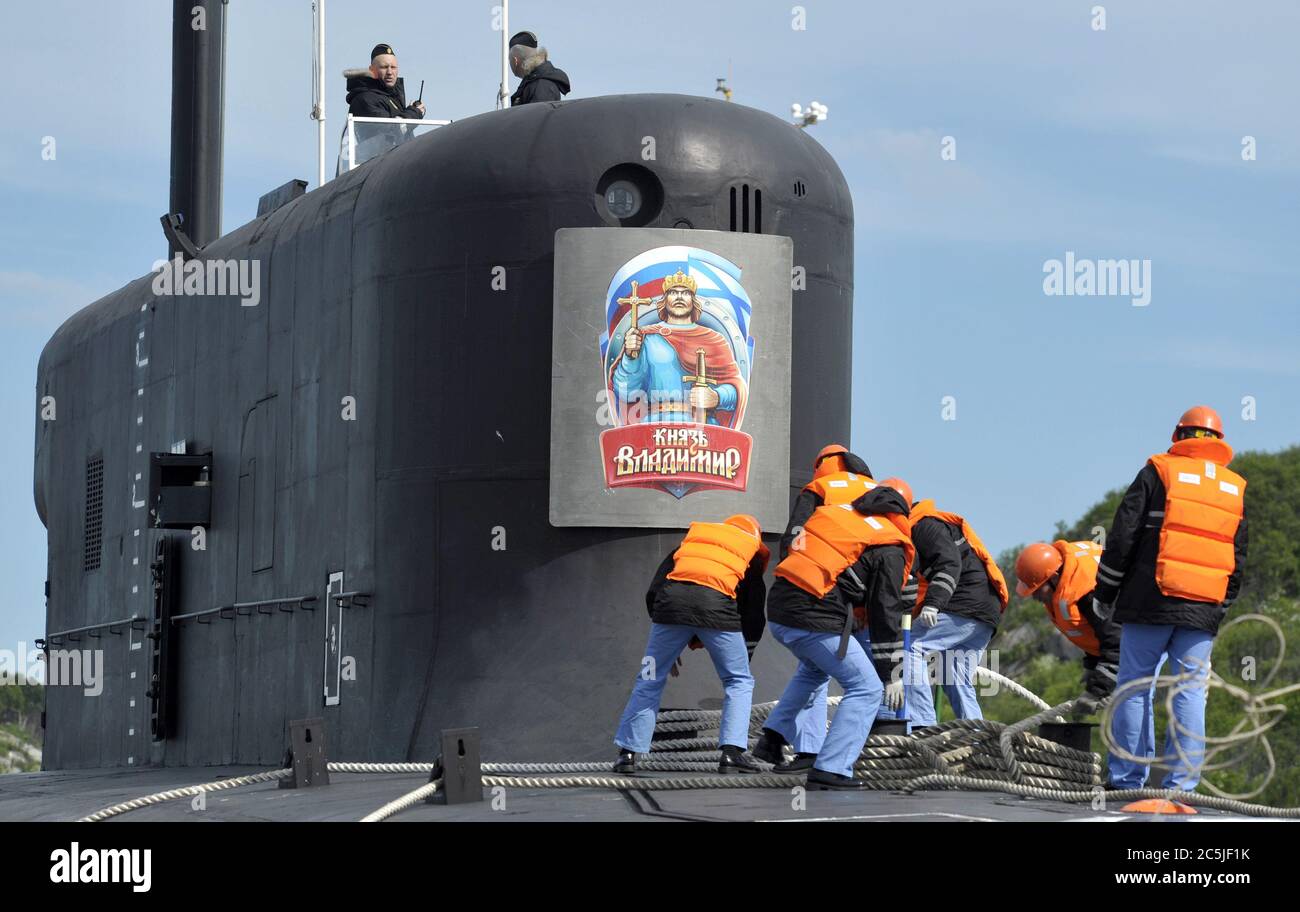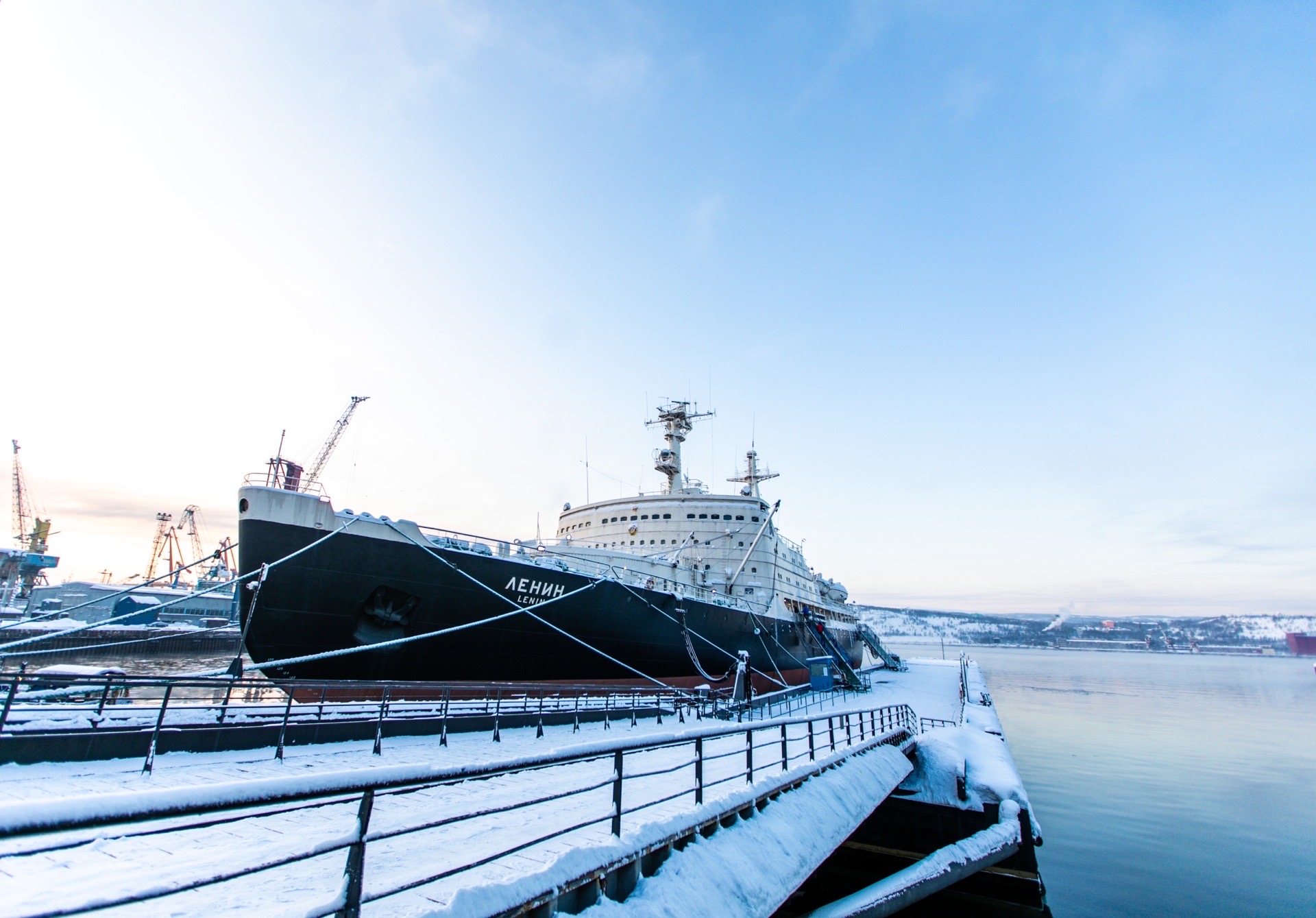Gadzhiyevo Naval Base - The Ice Curtain: Bringing Transparency to the Arctic is an ongoing collaborative series between the European program and the NGA.
The Kola Peninsula is the core of Russia's military establishment in the western Arctic, and its air and naval capabilities are vital to Russia's homeland defense, Arctic dominance, and global power projection capabilities. Russia's modernization and expansion efforts at the Severomorsk-1 Air Base, the Gadzhievo Submarine Base, and the Okolanya Submarine Support Base have improved Russia's operational readiness and ability to control the maritime space around the Arctic. The Kola Peninsula is also home to systems such as the RS-24 YARS, located at the Plastsk Cosmodrome, which poses a significant challenge to US and allied defense systems. Russia's willingness to use ballistic and cruise missiles to defend its position in the Arctic was demonstrated during exercise Grom- 2019. Russia's military expansion in the Arctic is far from over - Russia will continue to expand its military presence in the Arctic to protect Russia's strategic interests in the future.
Gadzhiyevo Naval Base

Introduction Russia's western Arctic has a large concentration of sophisticated conventional capabilities for defensive and potentially offensive purposes, centered on the Kola Peninsula and home to Russia's Northern Fleet headquarters, which hosts Russia's most advanced land, air, and sea forces, including these assets. . Nuclear arsenal and second strike capability. The peninsula's location - the gateway between the Arctic and the North Atlantic - and its extensive military assets make it central to Russia's defense and homeland capabilities and power projection.
Submarine Operations Of Russia's Northern Fleet 2016 (press Release)
Russia's military modernization efforts and new construction on the Kola Peninsula have focused on air base improvements and naval base expansion. Severomorsk-1 Air Base, Gadzhiyevo Submarine Base and Okulnaya Submarine Support Base are particularly important to Russia's development and defense while ensuring Russia's freedom of navigation and air sovereignty. Nearby sites, such as the Plastsk Cosmodrome, located at the Kora missile test range in Arkhangelsk, boost Russia's Arctic military capabilities, as demonstrated by the recent Grom-2019 exercise. The Plesetsk Cosmodrome is a very important site for testing advanced weapons such as the RS-24 Yars ICBM.
Military exercises and weapons tests in and around the Kola Peninsula are frequent and demonstrate Russia's operational readiness to use nuclear forces to deter the enemy in a possible conflict. Exercises like Ocean Shield and Grom-2019 also show Russia's calculation that the Arctic is a critical area for national security, power projection capabilities and economic interests. Russia's modernization and expansion efforts will continue in and around the Kola Peninsula in the future, with the main goal being to establish Russian sovereignty in the region.
Located on the southern outskirts of Severomorsk and about 15.5 km northeast of Murmansk on the Kola Peninsula (Murmanskaya Oblast) is Severomorsk-1 Air Base. Severomorsk-1 dates back to World War II, when it was known simply as Severomorsk Air Base, protecting the northern part of the Soviet Union and provides air cover for both naval installations on the Kola Peninsula and for Allied supply convoys heading for the port of Murmansk.1 During the Cold War, Severomorsk-1 was added to its strategic importance, along with two sister air bases, Severomorsk-2 and Severomorsk- 3. Strategic bombers (eg, Tu-16/-95), attack (eg, Su-24) and reconnaissance aircraft (eg, Il-38) based or deployed at the base, tasked with protecting the western Arctic northwest of the region. Soviet Union and to provide a strategic strike capability against the U.S. With the collapse of the Soviet Union in 1991, the services and capabilities of Severomorsk Air Base declined significantly.
However, the strategic importance of Severomorsk-1 reemerged in late 2011 or early 2012. During that time, the Russian military began an extensive multi-year modernization project at the base in anticipation of the Russian Defense Ministry's announcement in 2013 that it was being relaunched. - Involvement in the Arctic region to maintain its northern access, protection of mineral and energy resources, and monitoring of shipping in the Northern Sea Route (NSR).
Russia Is Building 2 More Ballistic Missile Subs, The Latest In A Long Line Of 'boomers' That Worry Its Rivals
Satellite images of Severomorsk-1 (69.030776 N, 33.42271 from 14 May 2012) show that the base has ceased operations while modernization projects are underway. The visible developments include:
Five years later, on July 30, 2017, satellite imagery shows significant, albeit slow, progress:
The latest satellite images from September 4, 2019 show that the airbase is operational again, the modernization project is not yet complete, as a lot of work is still needed on the infrastructure part (e.g. completion of the taxiway and the apron). Done. finished. Among the indications that the base is active include:

During this modernization, minor improvements were made to the air base's supporting infrastructure, including living quarters, warehouses, machinery, and support areas on the north side of the base.
Russia's Northern Fleet Celebrates Its 287th Anniversary
However, the modern Murmansk-BN (EW) electronic warfare system, which is reported to be deployed in the Severomorsk region, is not directly detectable in the area around Severomorsk-1 in the latest satellite images.
In light of the relatively slow rate of construction observed in the last seven years, it is not clear when all the modernization projects will be completed.
Analysis The upgrade to Severomorsk-1 increases Russia's operational readiness, presence and capabilities in the Northwest Arctic region, particularly improving domain awareness and operational capability around the Kola Peninsula. Increasing the number of patrol aircraft assigned to search and rescue operations improves the viability of the NSR as a commercial maritime route. With further upgrades to the base, the operational capability could be extended to the increasingly ice-free Barents Sea, Greenland Sea, North Atlantic Ocean and Arctic Ocean. In anticipation of ice retreat and increased human activity in the Far North, Severomorsk-1 could extend Russia's strategic reach and push forward defense lines further from the coastline, increasing anti-access/air denial capabilities near the Kola Peninsula.
If the Murmansk-BN EW system is deployed (there is no satellite image currently showing the Murmansk-BNsystem), it will further enhance Russia's Arctic capabilities by improving safety in the NSR and providing early warning capabilities. With a reported range of 5,000-8,000 km, Russia can theoretically monitor and disrupt communications throughout the NSR and Scandinavia, as well as deep in the central Arctic Ocean. In May, the Northern Fleet reportedly completed a new radio-electronic warfare center, which will monitor About the system in Severomorsk. The Murmansk-BN and free EW systems add another layer to Russia's defense capabilities on the Kola Peninsula, which can disable foreign ships, submarines or aircraft traveling to Russia's eastern entrance to the Arctic. This EW asset would essentially render the invader "deaf, dumb And blind.” Russia’s EW capabilities were on display during NATO’s Trident Juncture 2018 exercise, when Norway and Finland fell victim to Russian GPS jamming and jamming, an increasingly important tool that Russia uses frequently.
Ssn Classe 'lira'
New Missile Storage Facility at Okulnaya Ship Support Base Okulanya Submarine Support Base (69.095773° 33.450602°) is located on the eastern coast of Okulanya Heights (Okulanya Bay), Murmansk District, and is an important and important base of the Russian Navy. A submarine-launched ballistic missile (SLBM) storage and loading facility on the Kola Peninsula. Other SLBM loading facilities include the Gadzhiyevo submarine base and the Severodvinsk submarine base.
In addition to housing and maintaining SLBMs, Okolania may also store nuclear warheads. Although often described as a submarine support base, it is likely to also support the cruise missile requirements of other Northern Fleet surface combatants, such as warships based in the bay at Severomorsk Naval Base.
The Okulanaya submarine support base has been associated with nuclear-armed SLBMs since the late 1950s. As a historical footnote, the base appears to have played a small but important role during the Cuban Missile Crisis of 1962, when nuclear weapons may have been transported from Okolania to Cuba and back during October-November 1962 by merchant ships.

Unique in some ways: It is the only merchant ship known to have brought missile-related equipment from Cuba to the Soviet Arctic, and was one of the first to depart after the Soviet decision to remove strategic weapons from Cuba. The ship may have carried nuclear warheads to and from Cuba, perhaps without it
Submarine Base Murmansk Murmansk Hi Res Stock Photography And Images
It was never taken down. By moving nuclear warheads through these Arctic facilities, the Soviet Union may hope to avoid monitoring or radiological monitoring in the Denmark or Turkey Straits,” implying the importance of the Arctic as a means of access to the United States.
During 2013, media reports stated that the Okulanaya submarine support base would be expanded with the construction of a large storage facility for "...more than 100" RSM-56 Bulava SLBM (NATO reporting name: SS-NX-30 or SS-N- 32). Bulava is equipped with ballistic missile submarines (SSBNs) (also known as the Mullet class), each of which can carry 16 missiles. The Dolgorukiy SSBNs are expected to eventually replace the Delta III and Delta IV SSBNs currently in service of the Northern Fleet.
The location chosen for the new storage facility (69.114642° 33.525728°) is 3.7 km northeast of the main Okolanya facility on the site of an old open storage facility consisting of 14 large covers, several support structures and a large parking area. Satellite imagery shows that in May 2014 construction began And in August
Norfolk naval base lodging, corpus christi naval base, naval base ventura county, hampton inn naval base, coronado naval base hotel, millington tn naval base, port hueneme naval base, bangor naval base housing, jacksonville naval base, norfolk naval base jobs, norfolk naval base, taxi norfolk naval base
0 Comments